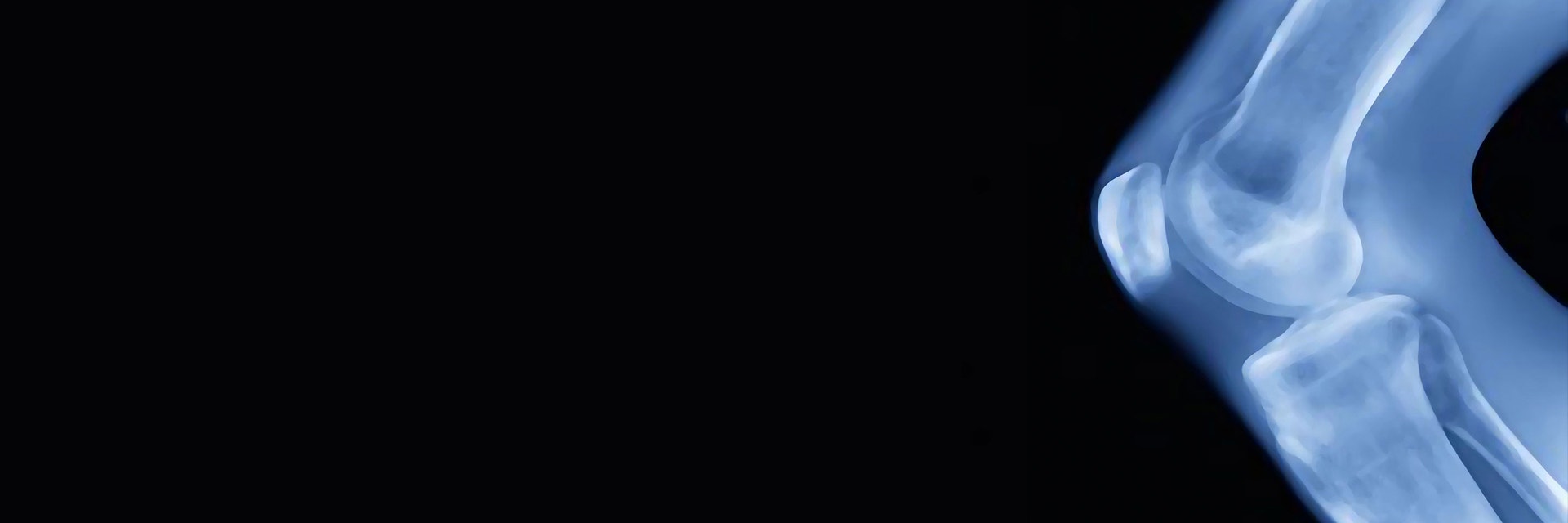EXPERT INSIGHT
How Personalized Knee Guides Mean Less Invasive, More Efficient Surgeries
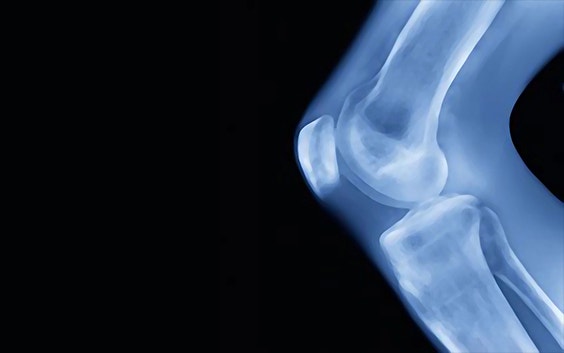
Picture this. It’s morning. A patient walks into a clinic, experiencing knee pain at every step. That same day, the same patient walks home, without the pain from before. The patient just had a total knee replacement operation.
Innovative orthopaedics
This scenario already exists in Orthoparc in the Netherlands. Orthoparc clinic uses an innovative patient-centric framework to give their patients the maximum attention. The multidisciplinary clinical team works using a one-day care concept. This approach means minimizing anesthesia and surgical time, optimized nutrition programs, and starting physiotherapy immediately after surgery. Therapists empower patients to be mobile, and ensure there’s minimal fear of resuming daily activities.
The key to running such a smooth operation is having a motivated team and a highly efficient, optimized process. It’s all part of the team effort. As for the process, each step is executed in the shortest time possible while delivering a high-quality outcome. The patient’s experience is improved by using innovative tools, including personalized surgical guides.
Personalized knee care
Dr. Saskia Boekhorst is an orthopaedic surgeon with a patient-centric mindset who works at Orthoparc. Inspired by her previous clinical experience, she started implementing 3D-printed personalized knee guides in her surgeries. Together with her team, she is always looking for ways to improve the process so as to perform the knee surgery even more efficiently and accurately.
Fast-forward seven years, Dr. Boekhorst has performed hundreds of surgeries using 3D pre-surgical planning and 3D-printed personalized knee guides.


“I’m a big fan of the personalized knee guides because this technology allows me to place the components of the knee arthroplasty exactly in the right axis of the leg in all dimensions. ”
— Dr. Saskia Boekhorst


3 compelling reasons to use 3D-printed personalized surgical guides
Dr. Boekhorst makes a convincing case for using personalized instrumentation. First, the alignment of knee arthroplasty a surgeon can attain is very precise. “The first one hundred cases I’ve double checked by manual measurements, because it was a different approach and I am very careful. But after seeing very nice and consistent results, I became convinced,” she says.
The second reason goes hand-in-hand with the first. Using customized knee guides makes the surgery less invasive for the patient. Dr. Boekhorst explains, “There’s no need to drill into the femur canal. The conventional alignment is done with an intramedullary rod into the femur canal. Knee guides keep the intramedullary space intact.”
Finally, the surgical procedures are faster, because there’s no need to make measurements during the surgery. “The positioning and alignment are already done by me within an interactive planning software in which I can rotate the knee in all directions and see how the prosthesis could be placed for a particular patient. You will never be able to see this in all these dimensions and directions with a real patient because of soft tissue,” says Dr. Boekhorst.
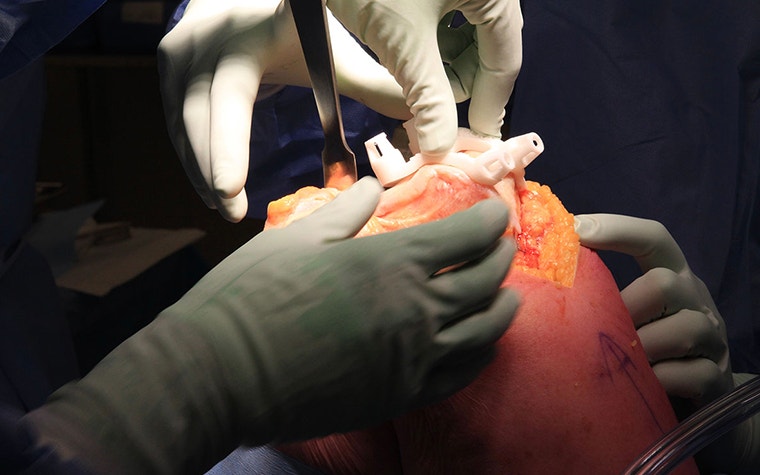

What other benefits are there to customized knee guides?
This time benefit combined with the ease of use of these guides means that gentler anesthesia products and painkillers can be used on patients. According to Dr. Boekhorst, a reduction in surgical time may decrease the risk of infections, and make it possible to increase the number of surgeries per day.
The procedure can be performed in less procedure steps meaning less surgical instruments and trays are necessary. “This is a great upside of this technique. You don’t need measurement tools and a prosthesis of each size to test, so you don’t need to keep them sterile.” Moreover, the knee guides come in a comprehensive ‘knee in the box’ package that includes all the necessary instrumentation and two sizes of preselected implants to treat a single patient. The reduced number of sets, and having fewer instruments to sterilize and to store inhouse, are factors that lower the overhead and logistics costs.
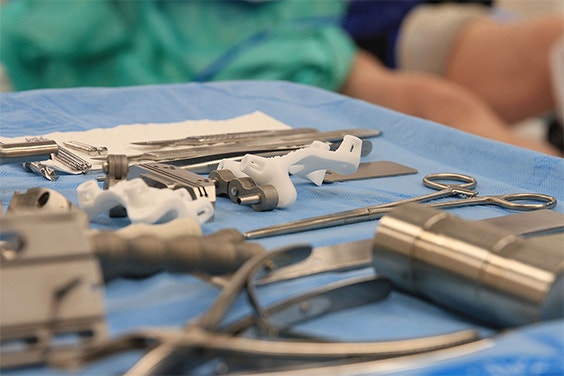
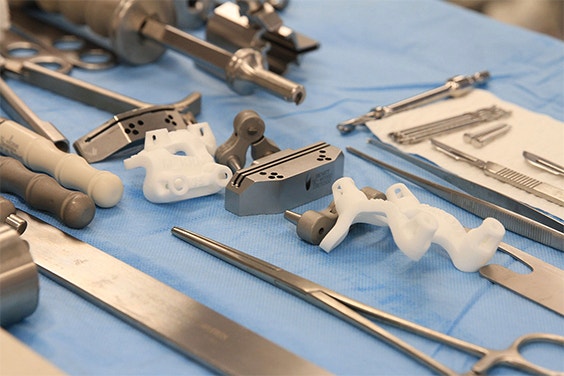
Turning medical images into a safer and more efficient surgical plan
Surgeons play a key role in the 3D preoperative plan that comes included with the knee guides. Overall, 3D preoperative planning offers surgeons the tremendous advantage of visualizing the surgical outline before making the first cut. This planning can even be brought into the operating room.


Knee-deep in benefits
According to Dr. Boekhorst, when it comes to improving patient outcomes it is important to keep an open mind. Adopting new approaches and implementing innovative technology into daily clinical practice can have multiple benefits for both the patients and the clinician.. The benefits are clear: less invasive surgery, shorter spinal anesthesia, milder pain medication, faster recovery for patients, and better alignment. The shorter operative time means that more surgeries can be performed per day. Thanks to a dedicated patient-centric team and the benefits of personalized knee guides, improved efficiency and accuracy are an integral practice, both inside and outside the operating room.
L-102884-01
Share on:
You might also like
Never miss a story like this. Get curated content delivered straight to your inbox.
